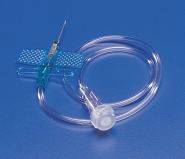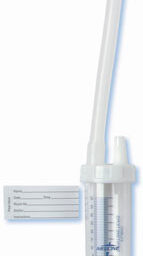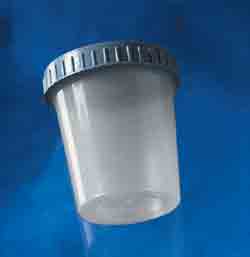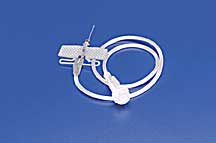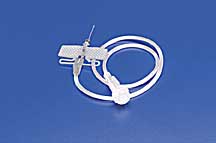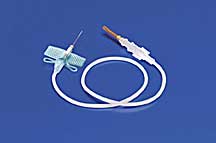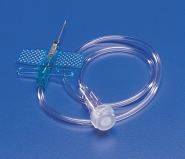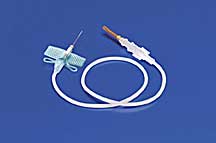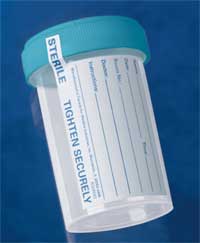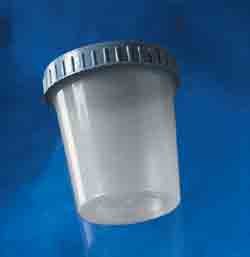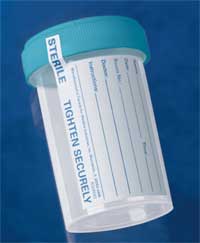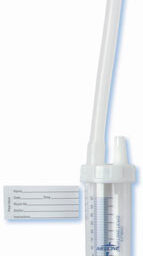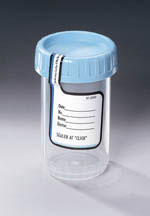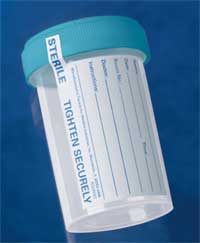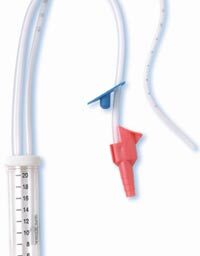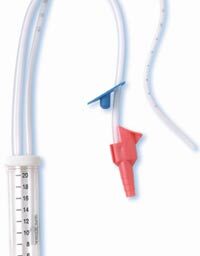Specimen Collection
Showing all 14 results
-
Blood Collection Tubes and Acessories5 Products
-
Mucus Specimen Traps4 Products
-
Specimen Collection Containers5 Products
-
19G Angel Wing Safety Butterfly Blood Collection Set
Item# 471522DWSMDRated 0 out of 5$181.95Original price was: $181.95.$134.78Current price is: $134.78.Monoject angel wing safety butterfly blood collection set allows one handed activation.
50/case
-
21Ga Angel Wing Safety Butterfly Blood Collection Set
Item# 281522DWSMDRated 0 out of 5$177.39Original price was: $177.39.$131.40Current price is: $131.40.Monoject angel wing safety butterfly blood collection set, with female luer adapter, allows one handed activation.
-
23 Ga Angel Wing Safety Butterfly Blood Collection Set
Item# 703522DWSMDRated 0 out of 5$201.88Original price was: $201.88.$149.54Current price is: $149.54.Monoject angel wing safety butterfly blood collection set, with multi-sample luer adapter, allows one handed activation.
-
23G Angel Wing Safety Butterfly Blood Collection Set
Item# 091522DWSMDRated 0 out of 5$204.33Original price was: $204.33.$151.36Current price is: $151.36.Monoject 23G x0.75in angel wing safety butterfly blood collection set allows one handed activation.
50/case -
25Ga Angel Wing Safety Butterfly Blood Collection Set
Item# 513522DWSMDRated 0 out of 5$199.50Original price was: $199.50.$147.78Current price is: $147.78.Monoject angel wing safety butterfly blood collection set, with multi-sample luer adapter, allows one handed activation.
-
3oz Sterile Pneumatic Tube System Specimen Container
Item# 76303DNYDMDRated 0 out of 5$93.53Original price was: $93.53.$69.28Current price is: $69.28.Each 3oz sterile pneumatic tube system specimen container comes packaged individually and is suitable for use in pneumatic tube systems.
100/case
-
4 Oz. Sterile O.R. Specimen Container
Item# 13303DNYDDMRated 0 out of 5$92.24Original price was: $92.24.$68.33Current price is: $68.33.Sterile O.R. pack
-
4oz Sterile Pneumatic Tube System Specimen Container
Item# 96303DNYDMDRated 0 out of 5$84.65Original price was: $84.65.$62.70Current price is: $62.70.Each 4oz sterile pneumatic tube system specimen container comes packaged individually and is suitable for use in pneumatic tube systems.
100/case
-
Mucus Specimen Trap
Item# 04144DNYDMDRated 0 out of 5$133.43Original price was: $133.43.$98.84Current price is: $98.84.Mucus Specimen Trap, 40cc Capacity
-
Mucus Specimen Trap
Item# 08144DNYDMDRated 0 out of 5$179.05Original price was: $179.05.$132.63Current price is: $132.63.Mucus Specimen Trap, 80cc Capacity
-
Specimen Containers, 4 oz, Polypropylene
Item# 53303DNYDDMRated 0 out of 5$156.28Original price was: $156.28.$115.76Current price is: $115.76.Packaged clean500/case
-
Sterile 3oz Pneumatic Tube System Specimen Container
Item# 24303DNYDMDRated 0 out of 5$201.17Original price was: $201.17.$149.01Current price is: $149.01.This sterile specimen container is suitable for pneumatic tube systems.
400/case
-
Sterile DeLee Mucus Trap with Contro-Vac Valve, 10Fr
Item# 01144DNYDMDRated 0 out of 5$205.38Original price was: $205.38.$152.13Current price is: $152.13.Sterile DeLee Mucus Trap with Contro-Vac Valve, 10Fr
-
Sterile DeLee Mucus Trap with Contro-Vac Valve, 8Fr
Item# 80144DNYDMDRated 0 out of 5$181.44Original price was: $181.44.$134.40Current price is: $134.40.Sterile DeLee Mucus Trap with Contro-Vac Valve, 8Fr
Those Bloody Specimens And their Specimen Collection Tubes
Lab test results rely on the quality of the specimen. If the wrong method of collection or storage container is utilized, the results can be skewed or faulty. It is imperative that not professionals observe proper specimen collection, but also, they place the samples in the right type of specimen collection tubes or container. The varieties of specimen tubes include mucus specimen traps, urine collection containers and specimen collection containers.
Blood Specimens and their Collection Tubes: The Most Common Specimen Container
Blood collection sets may provide the wherewithal to draw blood. The actual lab tests tend to focus their research on one of three categories of blood. These are:
Plasma
Serum
Anticoagulated or whole blood
A different color collection tube identifies the contents of the tube and its intent.
Color Coding
The color of the top of each specimen collection tube clearly indicates the purpose of the collection, as well as the chemicals each tube contains. The color-coded specimen collection tubes reflect a rainbow-inspired system and feature the following:
Green-Top Tube (Sodium Heparin): Fro special tests. It collects either heparinized plasma or whole blood
Grey-Top Tube (Potassium Oxalate/Sodium Fluoride): This preserves glucose in whole blood
Lavender-Top Tube (EDTA): Common for use in most hematological procedures
Light Blue-Top Tube (Sodium Citrate): Employed for drawing blood for research and test in coagulation
Red-Top Tube: Provides serum for clotted blood studies for immunohematology and/or selected chemistry tests
Royal Blue-Top Tube: Two types exist for the collection of serum or whole blood:
Anticoagulant EDTA
Plain
Applications of both are for the analysis of trace elements. Yellow-Top Tube (ACD): Special tests often require this collection of whole blood
Other Types of Specimen Collection Tubes
Besides color-coded, other specimen collection tubes are available for use. Among them are
Serum Gel Tube: a clot activator and serum gel separator and is used for various laboratory tests.
Special Collection Tubes: Some tests require specific tubes for proper analysis.
Mucus Specimen Traps: Used for taking tracheotomy cultures. Normally found pre-packaged in a sterile wrapping.
Urine Specimen Collection Containers: Used when larger specimens are needed, such as urine for urinalysis.
Use only the correctly identifiable collection tubes and containers in conjunction with compatible accessories.

